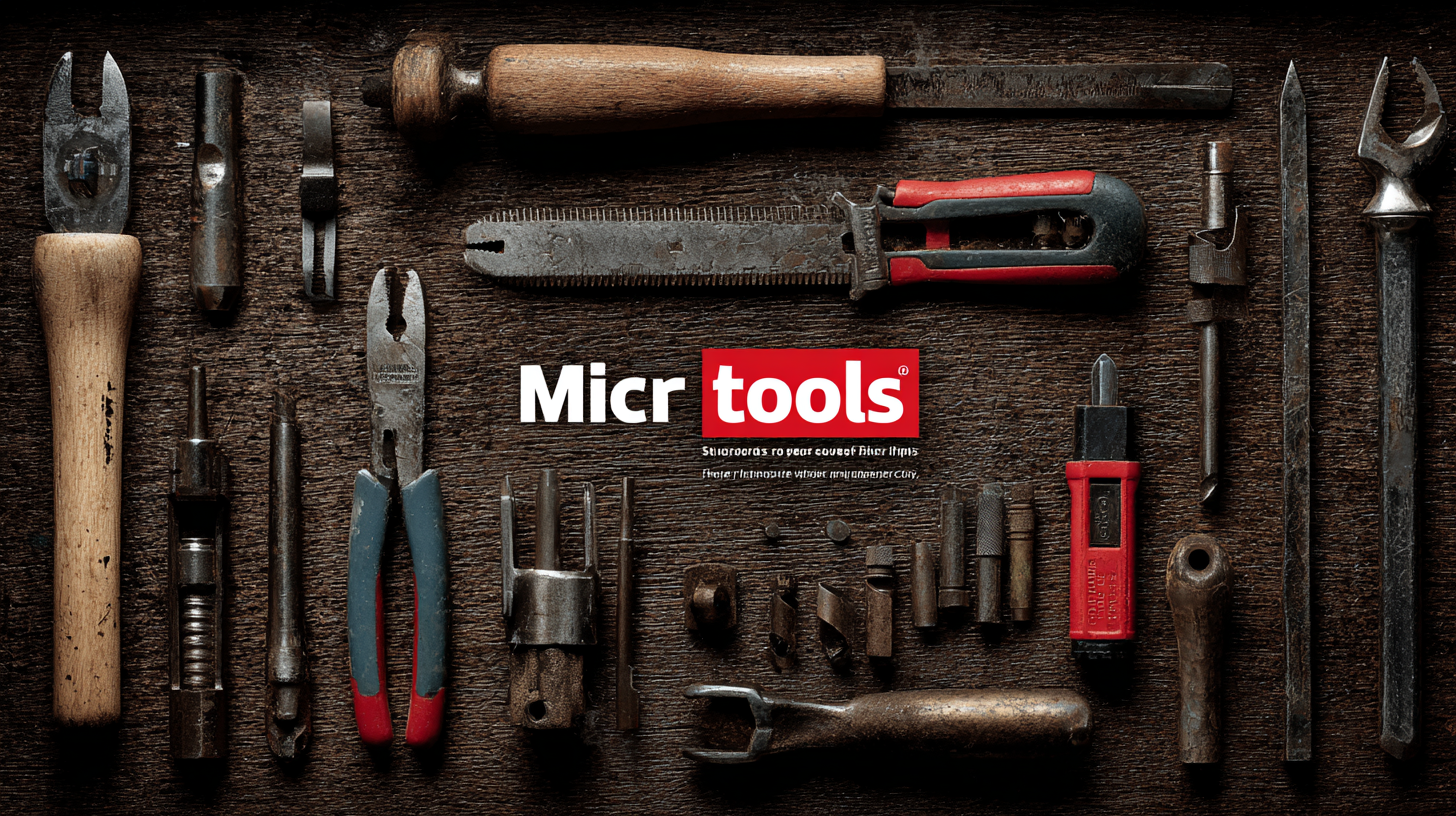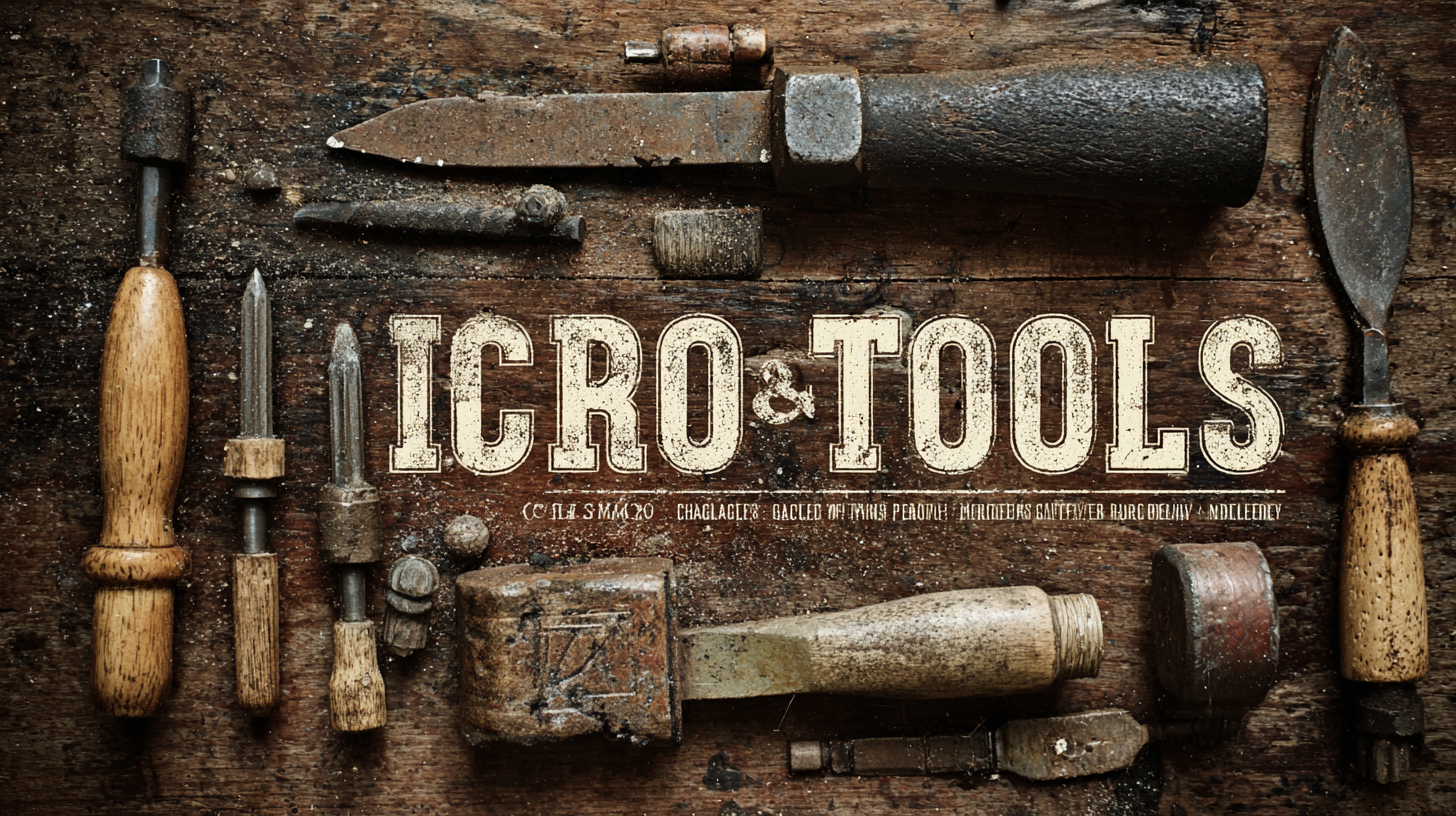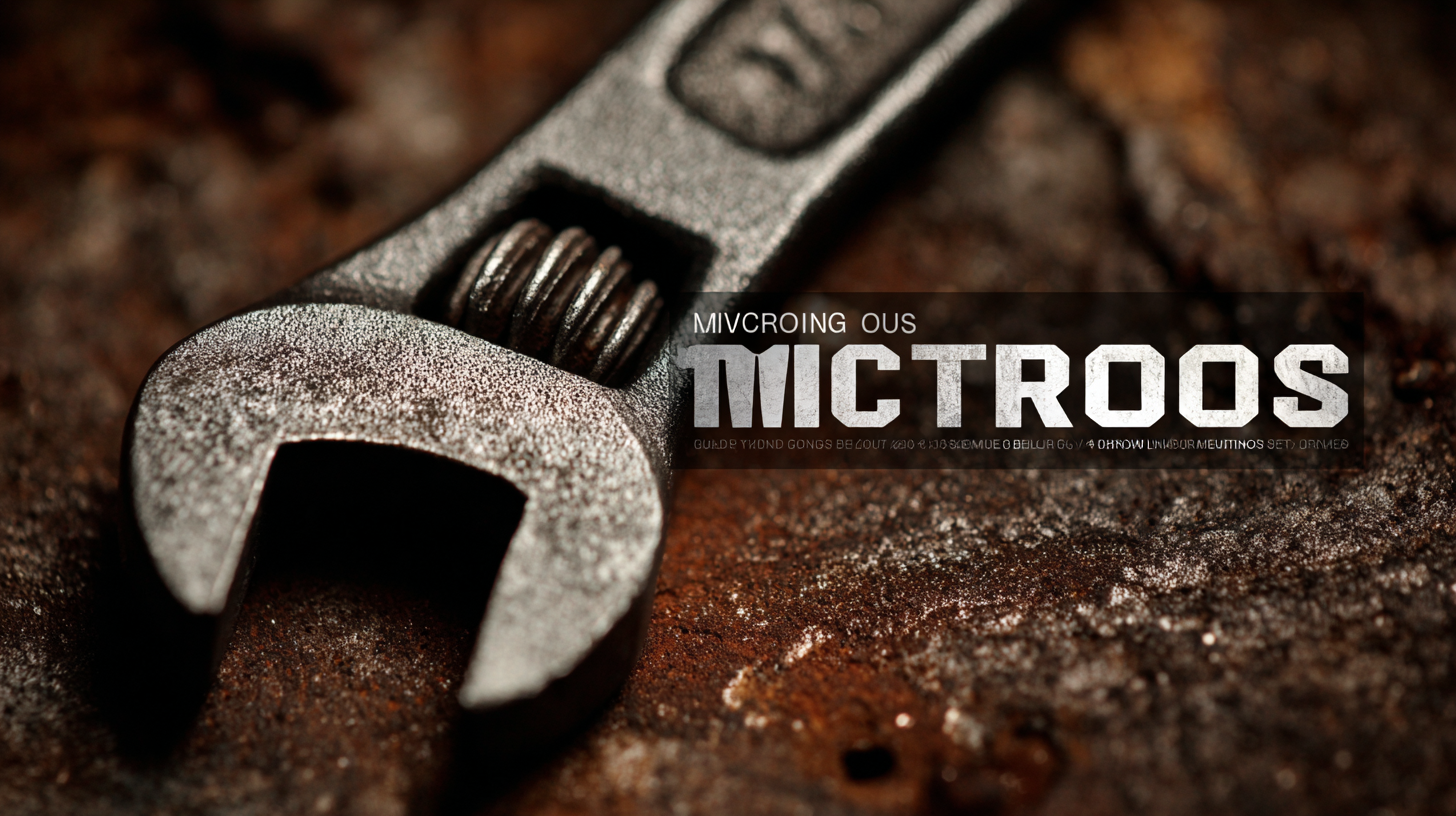In today's competitive manufacturing landscape, the demand for high-quality micro tools is at an all-time high, driven by industries such as aerospace, electronics, and medical devices. According to a recent report from MarketsandMarkets, the global micro tools market is projected to reach $1.2 billion by 2025, growing at a CAGR of 5.8% from 2020 to 2025, as precision engineering becomes increasingly critical. However, sourcing these tools presents significant challenges for global buyers, including navigating diverse supplier capabilities, quality assurance, and compliance with international standards. This blog will explore effective strategies to identify and partner with top-tier suppliers, ensuring the acquisition of superior micro tools that meet the rigorous demands of modern manufacturing applications. By understanding the market dynamics and leveraging industry insights, buyers can streamline their sourcing processes and enhance their competitive edge.

Understanding the importance of micro tools in global sourcing extends beyond just manufacturing efficiency; it encompasses their role in driving innovation and sustainability in diverse industries. As global buyers seek to streamline their operations, the adoption of micro tools becomes critical. These tools, often designed for precise applications in fields such as electronics, healthcare, and engineering, not only enhance productivity but also minimize waste. This is particularly pertinent in light of recent findings on microplastics, which highlight the ecological risks associated with oversights in resource management. By implementing micro tools that promote precision and efficiency, businesses can contribute to a circular economy while addressing environmental concerns.

Moreover, enhancing access to micro tools fosters financial inclusion for micro and small enterprises (MSEs), which are pivotal in today's economy. Digital financial solutions can empower these businesses to leverage micro tools effectively, thus overcoming traditional barriers to market entry and scaling operations. As reported by the World Bank, understanding the determinants of digital financial inclusion is vital for improving the ease of doing business for these enterprises. Consequently, global buyers must prioritize sourcing micro tools that align with sustainability and inclusivity goals, ensuring that their supply chains not only remain competitive but also socially responsible.
Sourcing the best micro tools can present numerous challenges for international buyers. One of the primary issues is the discrepancy in quality standards across different countries. According to a recent report by the International Factory Standards Association, about 30% of micro tools sourced globally do not meet the expected quality benchmarks, leading to inefficiencies and increased costs for buyers. Furthermore, language barriers and cultural differences can complicate communication, making it difficult to negotiate terms effectively.
To navigate these challenges, buyers should consider implementing a robust quality assurance program. Establishing clear communication channels and setting expectations upfront can mitigate misunderstandings. Additionally, leveraging technology can enhance transparency in the sourcing process; using digital platforms to monitor supplier performance and track shipments can significantly reduce risks.
Tip: When selecting suppliers, prioritize those who provide comprehensive certifications and quality reports to ensure alignment with your standards.
Furthermore, the logistics of sourcing micro tools pose another hurdle. According to a report from the Global Logistics Council, 40% of businesses faced delays due to customs issues and shipping complications. Streamlining logistics through established networks can help to alleviate these issues.
Tip: Build strong relationships with logistics providers who have expertise in international shipping regulations to expedite the delivery process.
Finding reliable suppliers for micro tools can be a daunting task for global buyers; however, implementing strategic approaches can simplify the process. First and foremost, establishing a robust network is crucial. Engaging with industry-specific trade shows and forums can help buyers connect with reputable suppliers. These events provide opportunities for face-to-face interactions, allowing buyers to assess the supplier's credibility and product quality firsthand.

Furthermore, utilizing online platforms dedicated to sourcing can enhance the search for dependable suppliers. Websites that specialize in connecting buyers with manufacturers often feature ratings, reviews, and comprehensive profiles of suppliers. Conducting thorough research on these platforms can lead to discovering emerging suppliers with competitive pricing and innovative products. Additionally, leveraging social media to follow industry trends and join relevant groups can yield valuable recommendations and insights into potential suppliers. By combining these strategies, global buyers can navigate the challenges of sourcing micro tools effectively.
When sourcing micro tools globally, one of the key challenges buyers face is ensuring the quality of the products. Quality standards and certifications play a crucial role in this process. Different countries have varying requirements, and understanding these can help buyers distinguish between high-quality tools and subpar alternatives. For micro tools, certifications such as ISO 9001, which focuses on quality management systems, ensure that manufacturers adhere to stringent production processes. Buyers should look for credible certifications that align with their specific needs, such as those that cater to precision engineering and durability.
Moreover, international standards, such as those established by ASTM or EN, can provide additional assurance regarding the materials and performance characteristics of micro tools. Evaluating these standards not only helps in ensuring the reliability and safety of the tools but also in fostering trust with suppliers. Engaging with suppliers who maintain transparency regarding their certifications and quality assessments can lead to better purchasing decisions and enhanced supply chain efficiency. For global buyers, it’s imperative to thoroughly assess these quality standards and ensure that their sourcing strategies align with the best practices in the industry.
In today's fast-paced global market, sourcing micro tools can be a daunting task for buyers. However, leveraging advanced technology can significantly streamline this process. Digital platforms, for instance, provide access to a vast range of suppliers and products, enabling buyers to compare specifications, prices, and reviews with ease. By using these tools, buyers can quickly identify the best options that meet their specific needs without the time-consuming process of traditional sourcing methods.
Moreover, technologies such as artificial intelligence and machine learning play a crucial role in enhancing the sourcing experience. These technologies can analyze market trends, predict demand, and even automate order placements, allowing buyers to make informed decisions faster. Additionally, maintaining an updated database of reliable suppliers ensures transparency and builds trust, further simplifying the decision-making process.
By embracing these technological solutions, global buyers can navigate the complexities of sourcing micro tools more effectively and efficiently.
Contact
KYOCERA SGS Precision Tools, Inc.
(330) 686-5700
150 Marc Drive
Cuyahoga Falls, OH 44223
Products
Resources